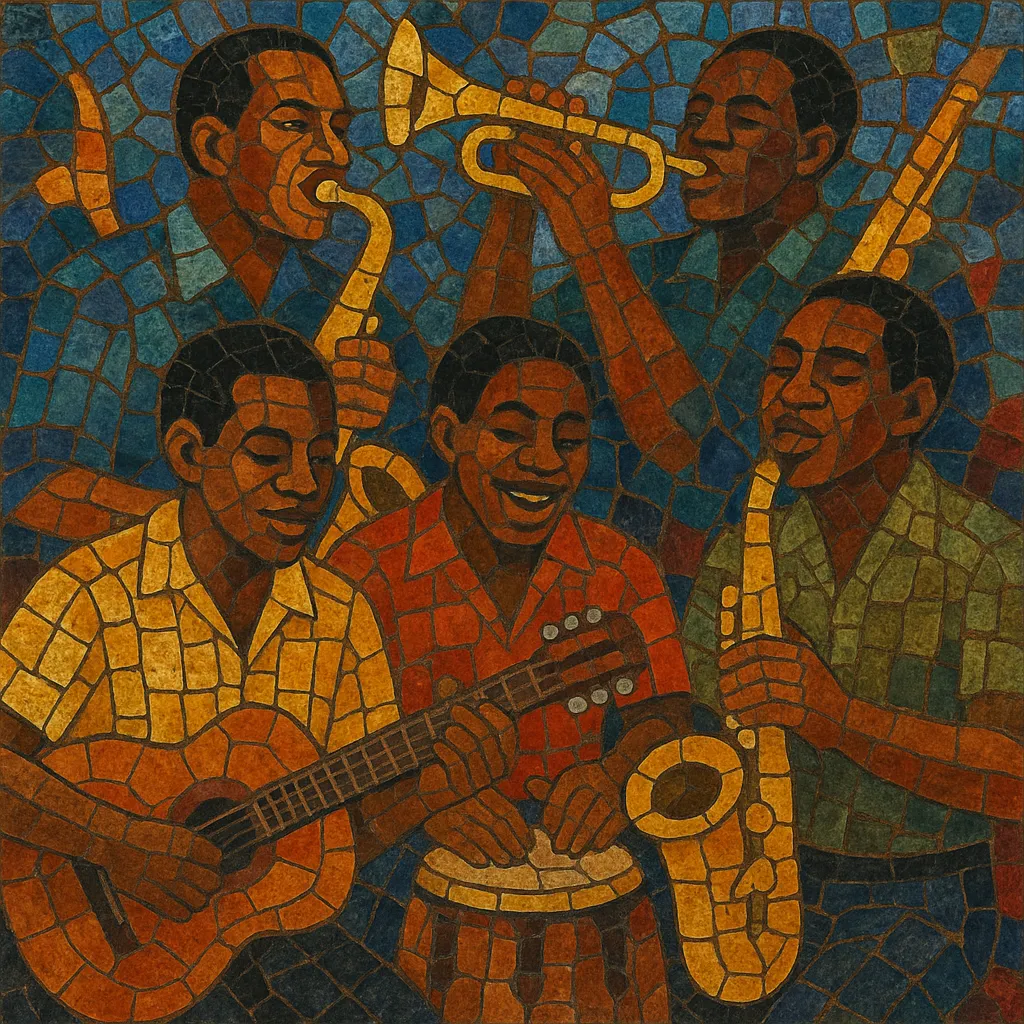Spouge is a popular music style from Barbados that emerged in the mid-to-late 1960s as a distinctly Bajan fusion.
It blends the off‑beat guitar “skank” and brisk tempos of Jamaican ska and rocksteady with the melodic sensibility and rhythmic accents of Trinidadian/Tobagonian calypso, plus the harmony and backbeat drive of American rhythm & blues and soul. Typical ensembles feature drum kit, electric bass, rhythm guitar playing upstrokes on the off‑beat, a small horn section (trumpet and sax/trombone), keyboards/organ, and lively Caribbean percussion (cowbell, congas, shakers).
Songs are usually major‑key, catchy, and dance‑oriented, with call‑and‑response choruses and lyrics about love, social life, and island culture. The result is an upbeat, party‑ready sound that is unmistakably Barbadian in identity.
Spouge arose in Barbados in the 1960s, a time when Jamaican ska and rocksteady were sweeping the Caribbean and U.S. rhythm & blues and soul were shaping dance bands across the region. Barbadian musicians sought a national sound that reflected local identity while remaining club‑friendly and radio‑ready.
The genre is most closely associated with singer Jackie Opel (Dalton Sinclair Bishop), a Barbadian artist who had recorded ska and rocksteady in Jamaica before returning home. Opel and local bands helped codify a hybrid approach: the ska/rocksteady off‑beat upstroke on guitar, a calypso‑flavored rhythmic feel, and R&B/soul harmonies, supported by horns and organ. Early releases and club performances popularized the style on the island and among Barbadian diaspora audiences.
As Barbados’ recording and live circuits expanded, spouge flourished in dancehalls, hotel lounges, and community events. Bands cut singles tailored for local radio and carnival‑season dancing, refining the genre’s brisk tempos and bright horn lines. Although Jackie Opel’s untimely death in 1970 curtailed one of the style’s key voices, the sound continued to thrive locally through bands and singers who carried the torch.
By the mid‑1970s, soca (itself a modernized calypso) rose to dominant regional popularity, and spouge activity slowed outside of Barbados. Nevertheless, spouge’s Bajan off‑beat feel and horn‑driven arrangements fed into the island’s later dance music developments, laying cultural and stylistic groundwork for subsequent Barbadian soca styles (including bashment soca). Today, spouge is celebrated as a heritage sound—revived in retrospectives, festivals, and reissues that honor its role in defining a distinctly Barbadian beat.


